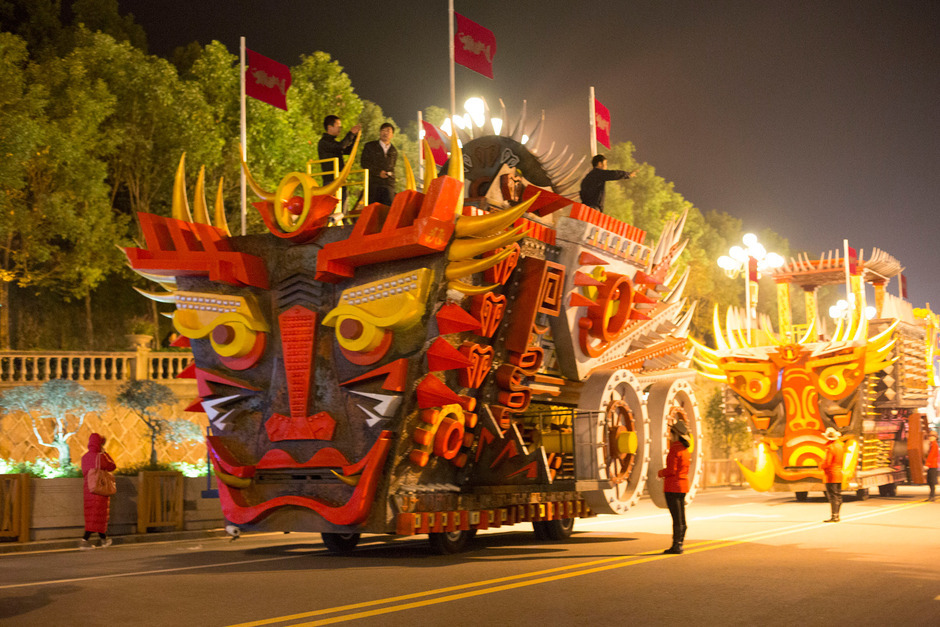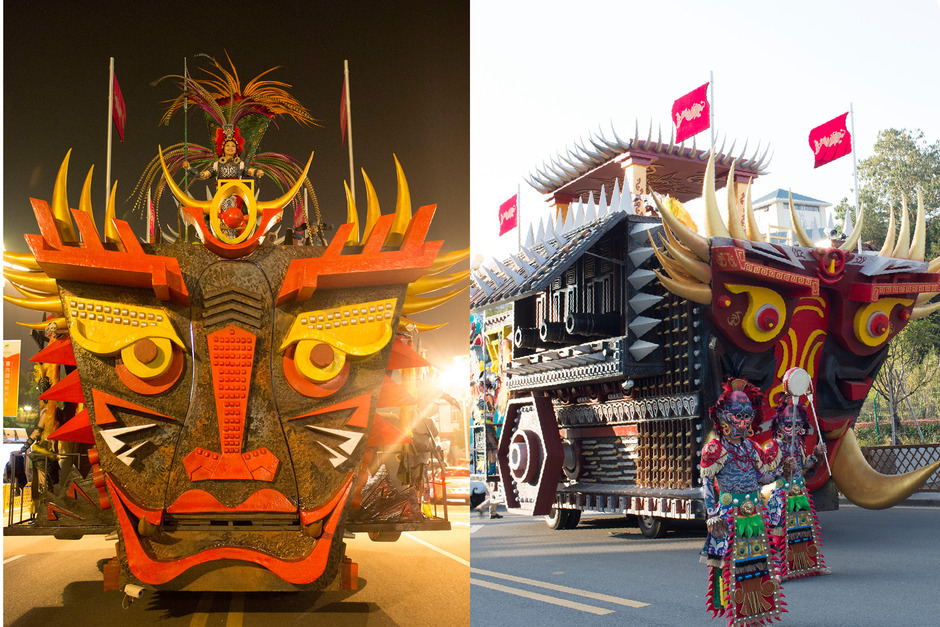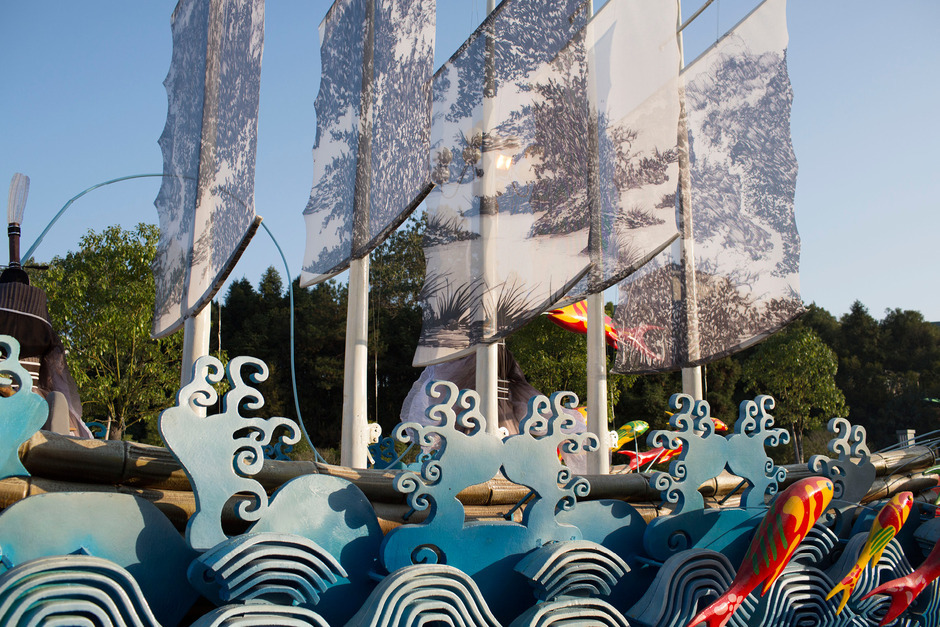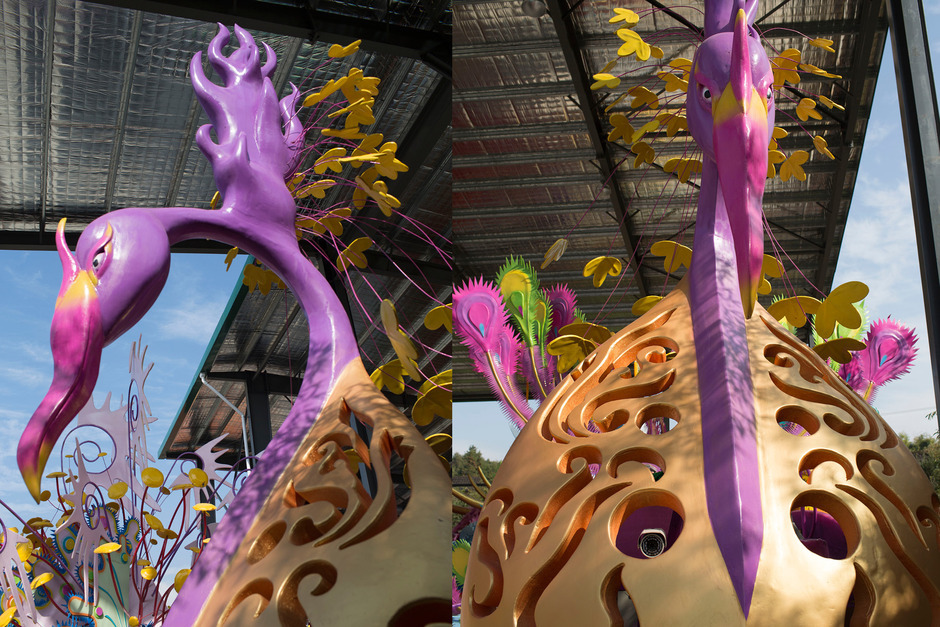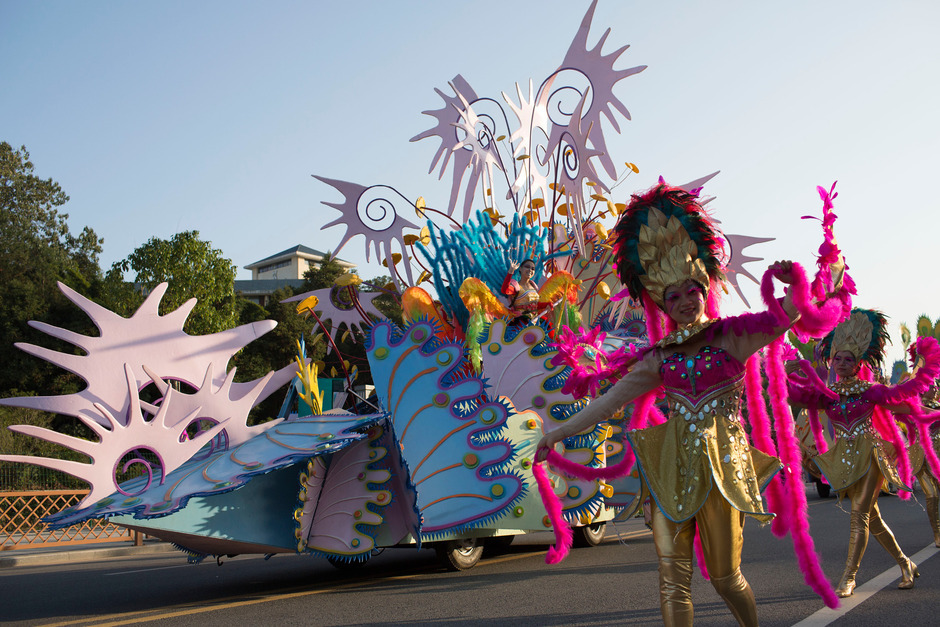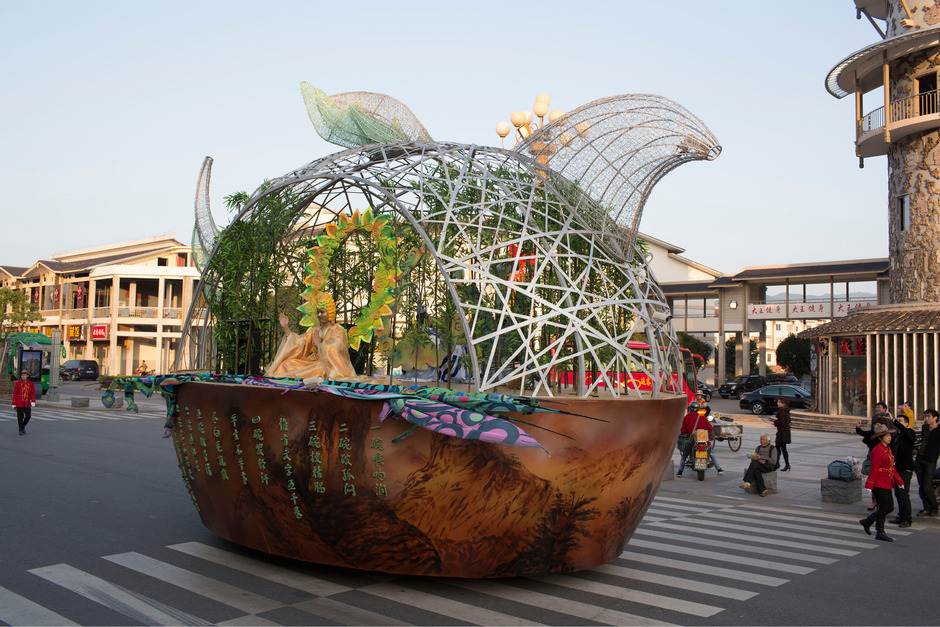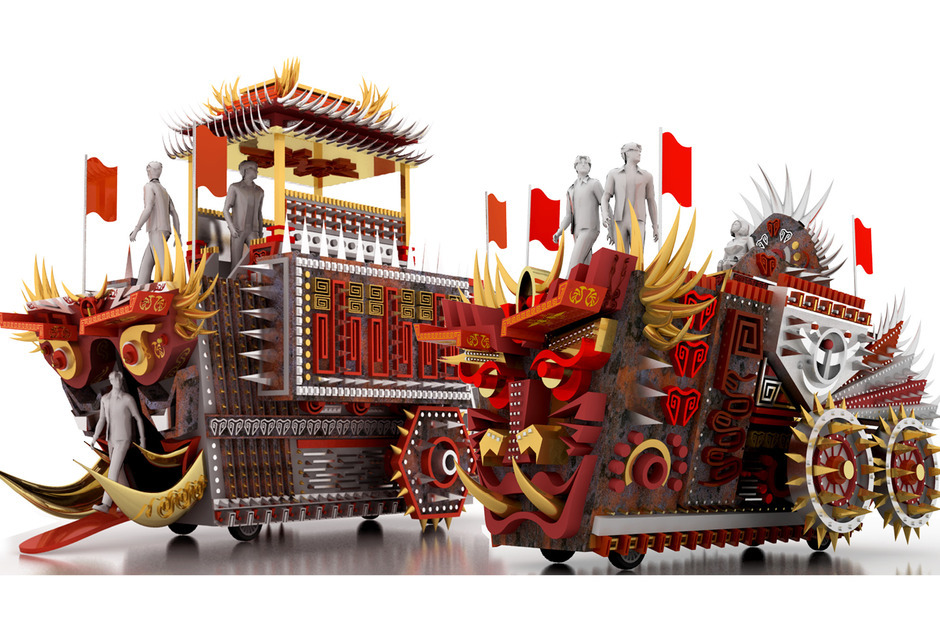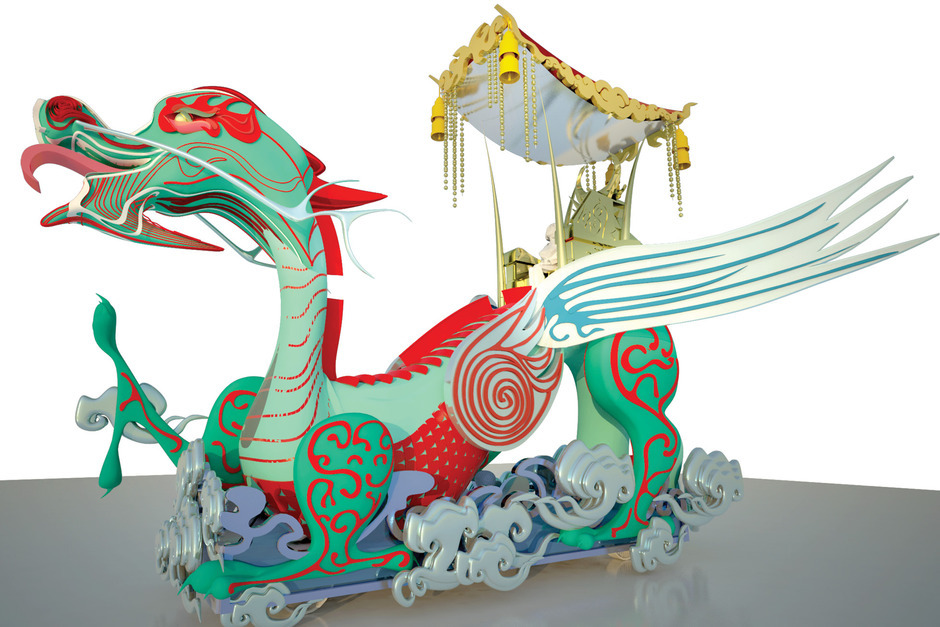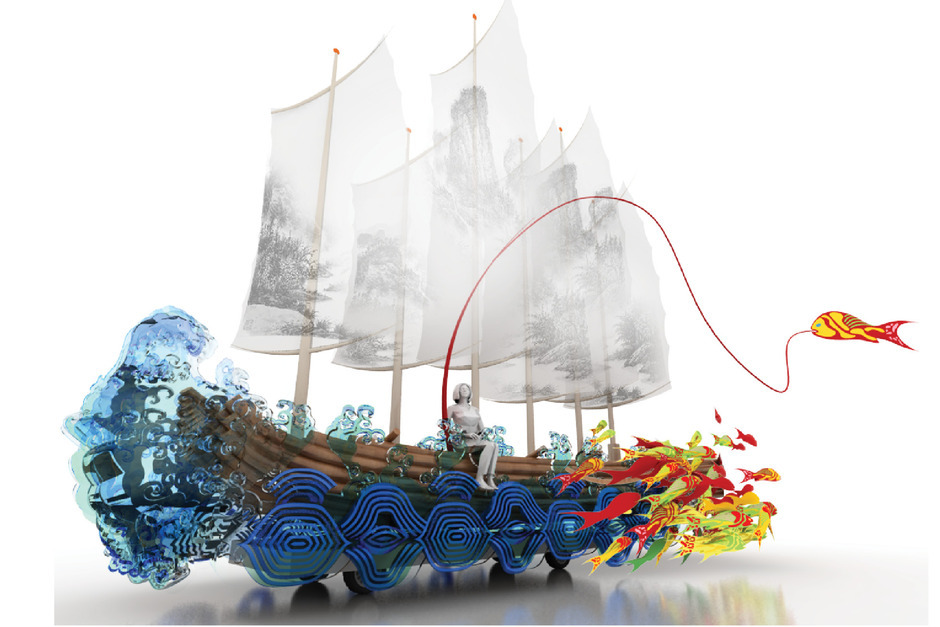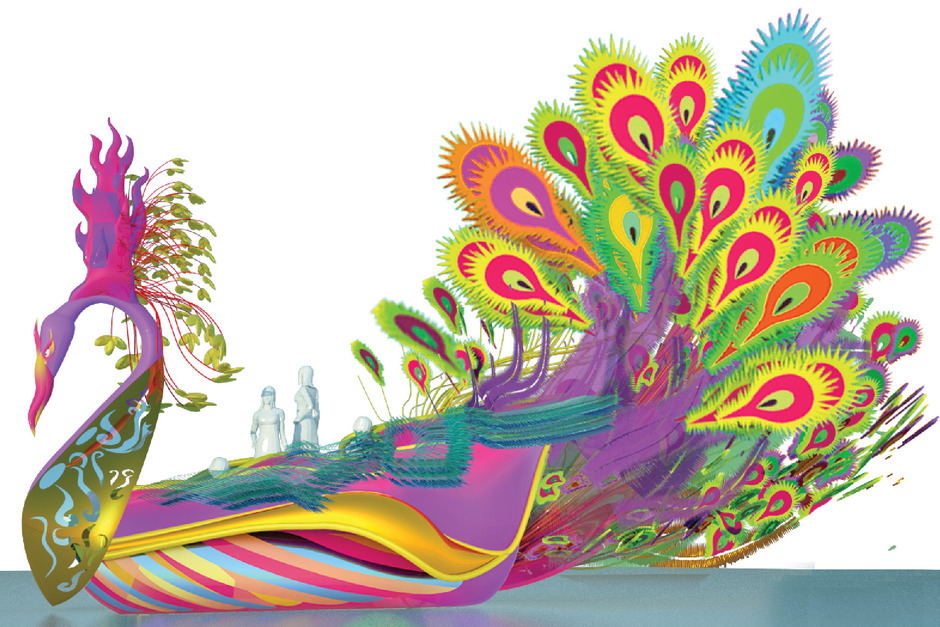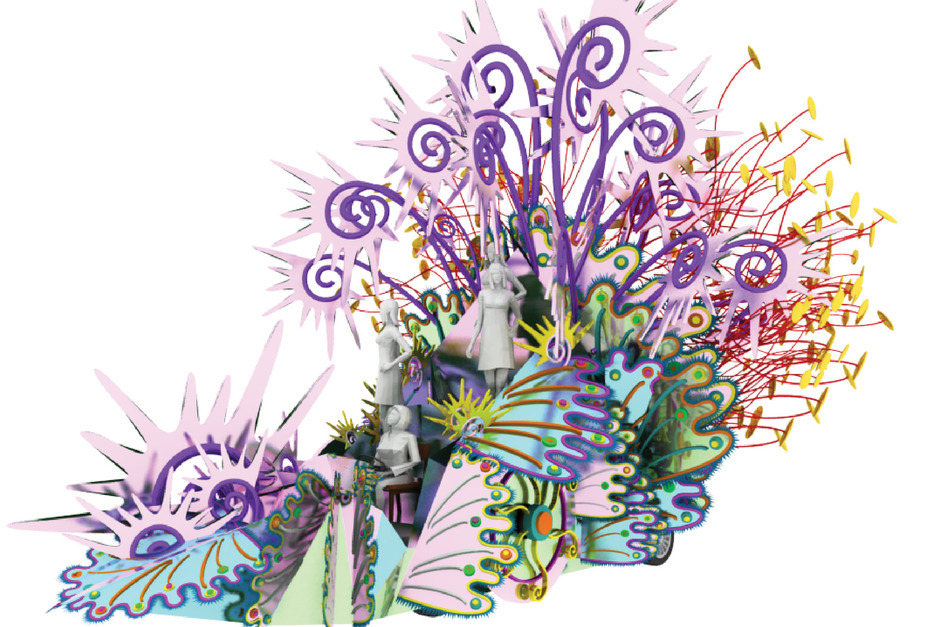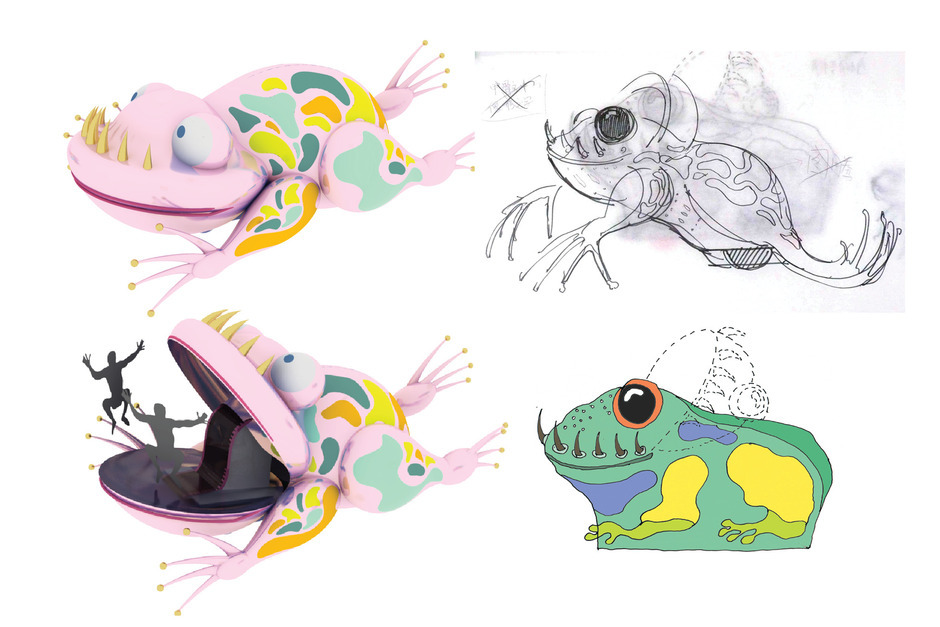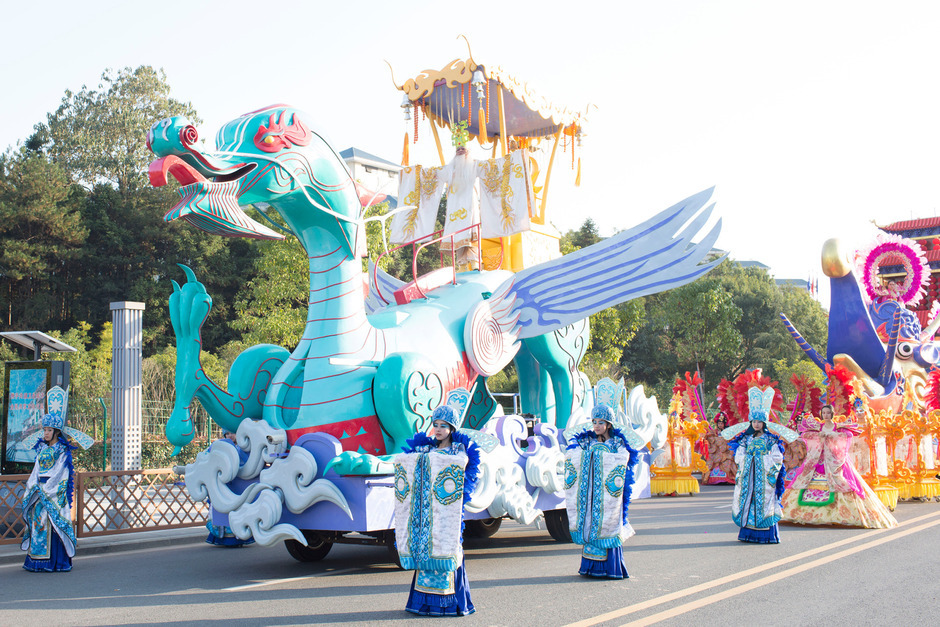
Wuyishan Parade
Wuyishan 武夷山市
For the video of Wuyishan Parade click HERE
BAM has designed eight moving parade floats for a daily parade through the streets of the mountain town of Wuyishan. The town, famous for its scenic mountainscape and Nine Bends River, draws visitors from around China. The local government commissioned the parade to create a daily cultural spectacle within the town.
The design brief for the project include detailed references to the local culture, history, and customs. BAM worked closely with choreographers Kai Cui and Christina Zhao of Pure Element Company to determine the entire parade scope. BAM planned interaction with almost 100 dancers who dance on, in, and around the floats. There are many moments of interaction between the design of the floats and the choreography itself. For example one float is a giant frog that rides through the city until his mouth suddenly opens and 5 dancers emerge from inside.
All parade floats are mounted on moving bases. The smaller type of floats is powered by a three-wheeled bicycle and rider inside the float. The larger floats are mounted onto the chassis of a small van and operated by a driver.
"In this project we were directly translating very complex computer models into objects that had to withstand daily use and transport loading. Finding ways to achieve the durability and safety standards but still create spectacular shapes was a great challenge,” says BAM co-founder Allison Dailey. The team worked closely with local building teams in Beijing before shipping the floats to Wuyishan.
Several parade floats include special effects that require motorization and other special mechanisms. One of the floats opens as cannons push forward from the hull, emanating smoke. In another float, 5m long wings move, ensconcing the ‘tea fairy.’
In terms of design BAM is exploring the idea of theme. In most of our architectural or landscape design projects BAM designs according to a motif or an over-arching concept. That is great for those fields, but in a parade, people need to be able to have direct access to the ideas we are working with, and the best way we can do this is to create something that resonates within people as a human archetypal condition or as a cultural icon. This opens an exciting territory because we are partially a foreign design team, so in the amalgamation of cultural themes new ideas emerge, such as the tea fairy.
Photos and Video by Peter Le

